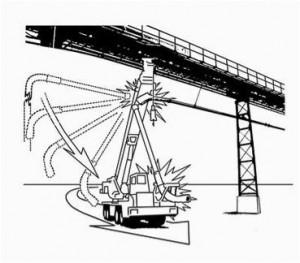BACKGROUND: On a fall day in the Eastern U.S., a mobile crane was traveling through a mill’s woodyard.
PERSONAL CHARACTERISTICS: The mobile crane operator was in his mid 40s and had worked in mill maintenance for about ten years.
UNSAFE ACT AND CONDITION: The crane was traveling with the boom in the raised position, rather than in the fully lowered position. The crane passed underneath a run of conduit, piping, and lines. The operator failed to notice that the boom was not lowered enough to clear the piping.
ACCIDENT: The raised boom came in contact with a sawdust blow line. The blow line piping separated at a heavy, ceramic-lined elbow, which quickly rotated downward and penetrated the crane cab’s side window, struck the operator, and exited through the windshield.
INJURY: The crane operator suffered head, neck, and shoulder lacerations, along with severe hand injuries that required multiple surgical treatments.
RECOMMENDATIONS FOR CORRECTION:
- * The boom and hook of a mobile crane should be returned to the stored/resting position prior to beginning travel from one spot to another.
- * Ensure that all employees are aware that violating mobile crane boom securement policies creates an unstable and potentially life-threatening condition.
- * Follow equipment inspection and operation procedures consistently and accurately.
- * Re-evaluate equipment and work practices periodically, and conduct periodic refresher safety training classes.
 Courtesy of the Forest Resources Association: https://www.forestresources.org/
Courtesy of the Forest Resources Association: https://www.forestresources.org/
